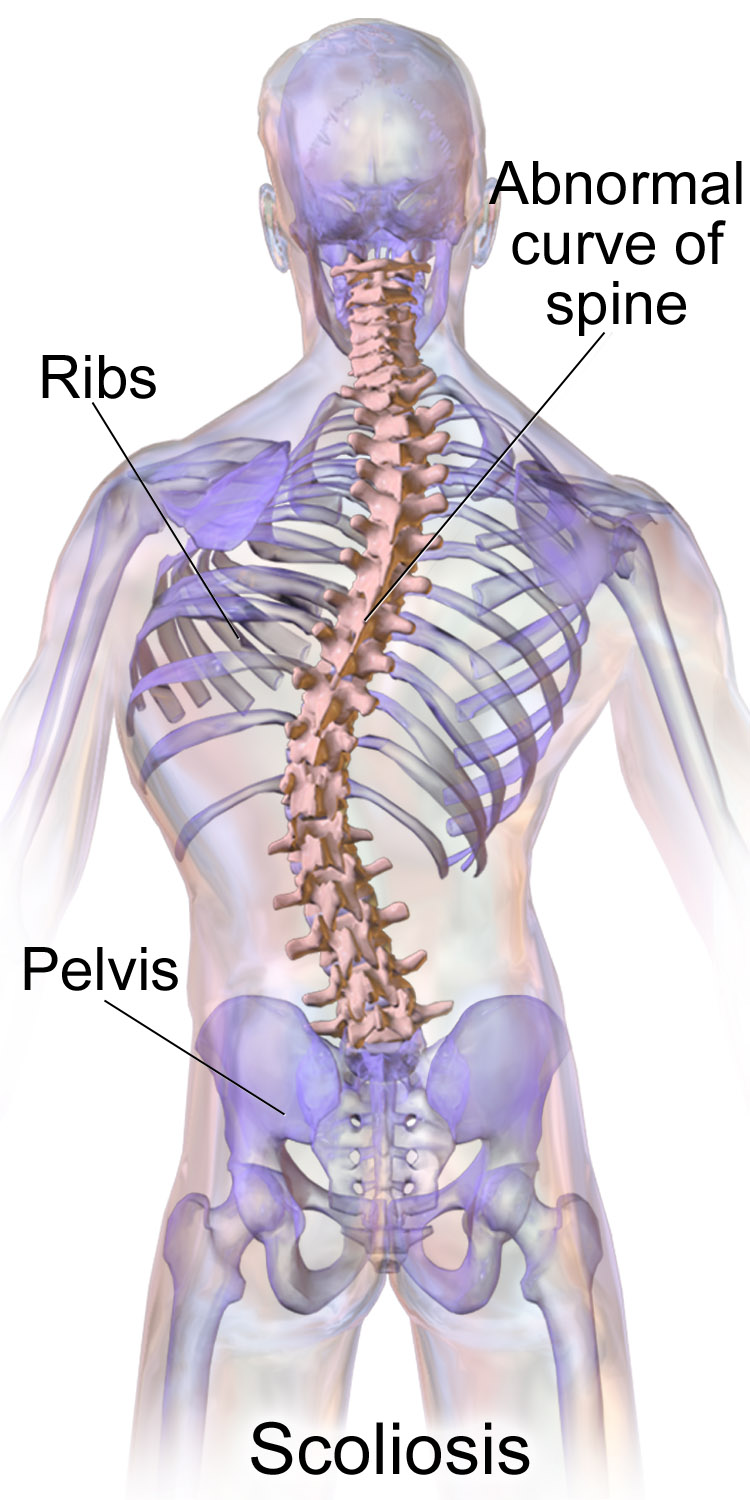Do you remember your grade school gym class? The dread as your class formed a line in the locker room, waiting for your turn to have your spine assessed? The nurse or doctor were simply looking for signs of scoliosis, a sideways curvature of the spine, most common during the growth spurt preceding puberty. It’s nothing to dread — the assessment is completely painless; however, it is important to look for signs of scoliosis early.
While most cases of scoliosis are mild and don’t require treatment (just monitoring to ensure the curve doesn’t worsen), more serious cases can be disabling. If the deformity worsens as the child continues to grow, the spinal curve can limit lung function by reducing the space in the chest. Read on to learn about the symptoms of scoliosis and the treatment options Mountainstate Orthopedic Associates offers residents of Morgantown, Fairmont and the surrounding area.
Scoliosis is often undetected as mild curves develop over time and generally don’t cause any pain. It’s important to make sure you child is being checked at school, or that you’re regularly looking for the signs at home.
SYMPTOMS
Hips
Does one hip sit higher that the other?
Is your child’s gait slightly off when walking?
Waist:
Is the waist even?
Does the bottom of the rib cage seem relatively level?
Shoulders:
Are the shoulders even?
Is one shoulder blade more prominent than the other?
Pain
Does your child complain about pain in their neck or back?
CAUSES
The most common type of scoliosis, idiopathic scoliosis, is usually seen in children 10 to 12 years old. The cause of this type of scoliosis is unknown, but there may be hereditary factors in play. Less common and more severe types of scoliosis may be caused by prior spinal injuries or infections, birth defects that affect the vertebrae and neuromuscular conditions (muscular dystrophy and cerebral palsy).
RISKS
While the cause of idiopathic scoliosis is unknown, there are several factors that can increase the risk of developing curvature in the spine.
•Age is the primary risk factor — scoliosis is more commonly seen in children during the growth spurt that precedes puberty.
•Girls have a higher risk of needing treatment for a more severe case of scoliosis, even though boys and girls are equally as likely to develop mild scoliosis.
SEEING A DOCTOR
During your appointment, your child will be assessed for scoliosis. The doctor will also check your child’s reflexes, look for any numbness and assess for muscle weakness. If the doctor thinks your child has a case of scoliosis, an x-ray will confirm the diagnosis. The x-ray will also show the doctor the severity of the curve and help set a plan for treatment. Several factors will guide the doctor in selecting the most appropriate and effective course of treatment.
•Severity — large curves are most at risk for worsening over time.
•Location — if the curve is located in the upper or lower spine, it’s less likely to worsen over time. However, cuves in the middle of the back (thoracic spine) worsen more.
•Type of curve — S-shaped curves, or double curves, typically worsen more than a single C-shaped curve.
•Age — if you your child has stopped growing, it’s unlikely that the curve will worsen. This also means that treatment options, like wearing a brace, will be less effective. How do you know if your child’s bones have finished growing? For boys, daily shaving indicates that they’re likely at their full height. Girls typically stop growing around two years after they begin menstruation.
TREATMENT
Treatment may simply be monitoring to ensure the curve doesn’t worsen, or may include a brace to improve posture. Braces won’t cure the scoliosis — it’s primarily worn to ensure the curve doesn’t progress further. They’re custom-made to each wearer and are virtually undetectable underneath clothing. Only a small percentage of cases require a brace, which while hard to get used to at first, doesn’t limit your child’s ability to participate in activities and sports. It’s important to remember that scoliosis is a manageable condition, but early diagnosis is key.
Surgery is only recommended for severe scoliosis and will typically be a spinal fusion. During spinal fusion surgery, two or more vertebrae are fused together, meaning they do not move independently. More complex surgery may be needed if a young child has a rapidly worsening case of scoliosis. The surgeons can place a metal rod which can be adjusted in length as the child grows (typically every six months). The rod is the length of the curve, not the entire length of the spine. Very few scoliosis cases require surgery. While it’s a difficult decision, surgery has good outcomes and is more effective the sooner it is done.
FOR MORGANTOWN AND FAIRMONT RESIDENTS
If your child’s school picks up on symptoms of scoliosis, or if you notice symptoms at home, don’t panic — Mountainstate Orthopedic Associates are experts in the diagnosis and treatment of childhood and adolescent scoliosis. We take extra care to ensure your child feels safe and understands all procedures the doctor may perform. We encourage close involvement of family members to make children feel supported and cared for, reducing their fear.
If you think your child may have scoliosis, remember — all treatment is more effective the sooner it starts. If you live in Morgantown, WV or Fairmont, WV, call us today to schedule an appointment.
Contact us to schedule an appointment.

